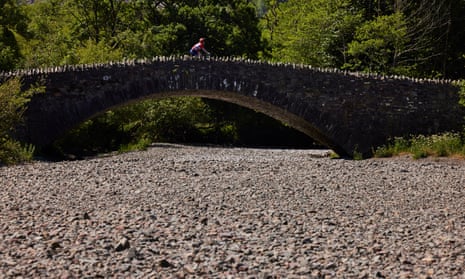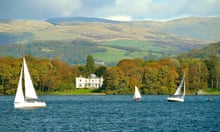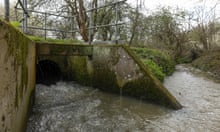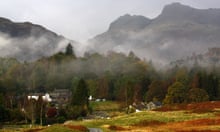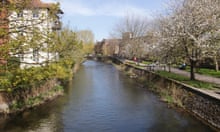The upper River Derwent in Borrowdale in the Lake District – famous for its reputation as the wettest place in England – is almost completely dry, leading experts to warn of “disastrous conditions for wildlife”.
This was the third year in a row where prolonged serious drought had dried out large parts of the river, said Ruth Mackay, a fisheries project officer from West Cumbria Rivers Trust. “Already our nature is under stress,” she said. “If a drought impacts a river, there is usually chance to recover in the succeeding years, but when it happens year after year, it becomes catastrophic for the wildlife that depend on it.”
The wildlife habitats of the Derwent catchment are of national importance, designated as both a special area of conservation (SAC) and a site of special scientific interest (SSSI).

Natural England’s most recent assessments, conducted earlier this year, indicated the majority of these sensitive habitats were in an “unfavourable condition” even before the current prolonged dry weather.
One lifelong Borrowdale resident, Billy Bland, 76, told the Guardian: “This dry spell is earlier and longer than I can remember. I don’t remember the beck ever being as low.”
Warmer water carries less oxygen, while low water levels raise the concentration of river pollutants, such as sewage and agricultural runoff. These factors “affect the whole of the ecosystem from the insects that live in the water to the fish, right through to the otters and the birds”, said Mackay.
Mackay singled out salmon for particular concern. She said water temperatures of 22-24C were potentially fatal for the fish, already in decline nationally.

“We think climate change has a lot to answer for,” said Mackay, pointing to an increased frequency of extreme weather events, including droughts. But in Borrowdale, she said, the negative effects of the climate crisis were compounded by modifications to the river system, made over centuries, mostly with the aim of draining farmland.
Parts of the Derwent and its tributaries now run dead straight, with the river perched on the edge of the valley. Rather than occupying its natural flood plain, Mackay said, the river had been turned into a “rapid conveyor of water”, making it less resilient to drought and flooding.
In recent years, West Cumbria Rivers Trust has been partnering with the National Trust, a major landowner in Borrowdale, to enact solutions. . Stream restoration work has taken place at Stonethwaite, towards the south end of Borrowdale, while further downriver, at Dunthwaite, new ponds have been built and black poplars, an important wetland tree that has all but disappeared from Cumbria, have been successfully introduced.
after newsletter promotion
Interventions are also under way on the high fells. Restored peak bogs act as powerful sponges for water, improving water security in all seasons.
“This [habitat restoration work] not only helps the river and all the plants and wildlife which rely on it, but it also provides sustainable drinking water for livestock. Storing water in the landscape in this way not only makes it more resilient to drought and wildfire, but to flooding also,” said Rebecca Powell, the National Trust’s Riverlands project manager.
Low water levels have been reported elsewhere in the UK, including in the Scottish Highlands, and the UK Met Office recently warned of a 2.3 times increased risk of Britain experiencing a possible repeat of 2022’s record-breaking heatwave.
Another Borrowdale resident, Maurice Pankhurst, who recently retired after 24 years as the National Trust’s woodland ranger for the north, told the Guardian: “If water is important to this country we have to change the way our uplands are currently being managed.”
At present, “water passes through [Borrowdale] like an express train”, he said. “The whole process needs to be slowed down.”
